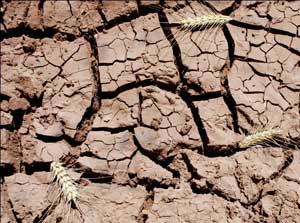 In a recent New York Times article, journalist Justin Gillis reports on the planet’s looming threat of climate change, agriculture’s monumental challenge, and how CIMMYT is working diligently to mitigate these global hurdles.
In a recent New York Times article, journalist Justin Gillis reports on the planet’s looming threat of climate change, agriculture’s monumental challenge, and how CIMMYT is working diligently to mitigate these global hurdles.
The article, which appeared in the 05 June 2011 print edition, reports from CIMMYT’s Ciudad Obregón station where wheat variety testing takes priority. As one of the four staple crops that constitute most human calories, wheat production is crucial to ensuring global food security; a task that is becoming more difficult amid growing populations, a changing climate, and the depletion of natural resources, according to Gillis.
“There is just such a tremendous disconnect, with the people not understanding the highly dangerous situation we are in,” CIMMYT’s deputy chief Marianne Banzinger told Gillis.
Furthermore, food shortages do not just affect the population going to bed hungry. Gillis states that food shortages can and do lead to political unrest, citing past turmoil in Haiti and the recent political destabilization in Arab countries. But not all hope is lost, as many agricultural scientists and experts believe that sustainably increasing global agricultural production is feasible.
“It may be possible to make more productive and resilient in the face of climate change,” Gillis reports. “But how?” you might be wondering – through the introduction of new agronomical techniques and new varieties resistant to climate strains, such as heat and water stress, and new pests.
Read the entire article available on nytimes.com.
 Climate adaptation and mitigation
Climate adaptation and mitigation